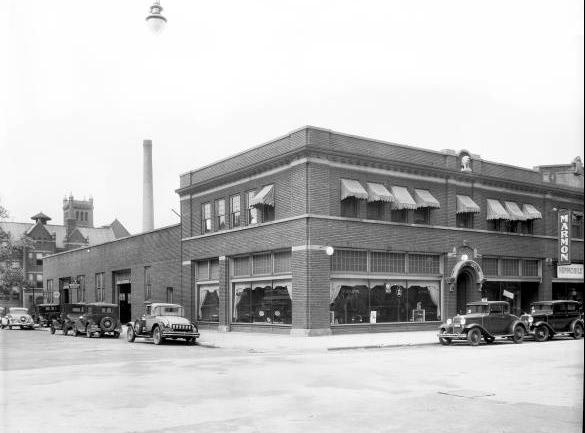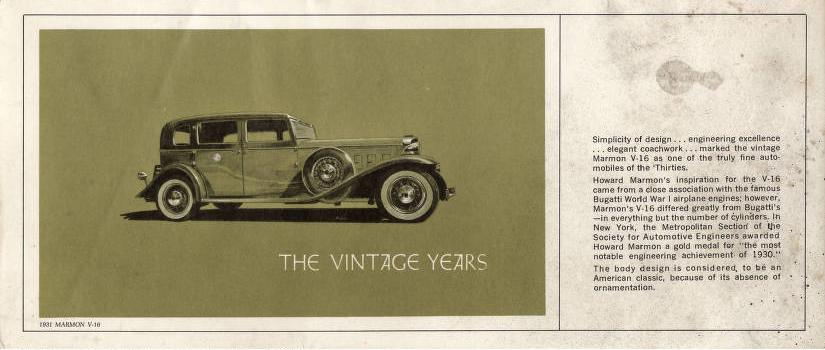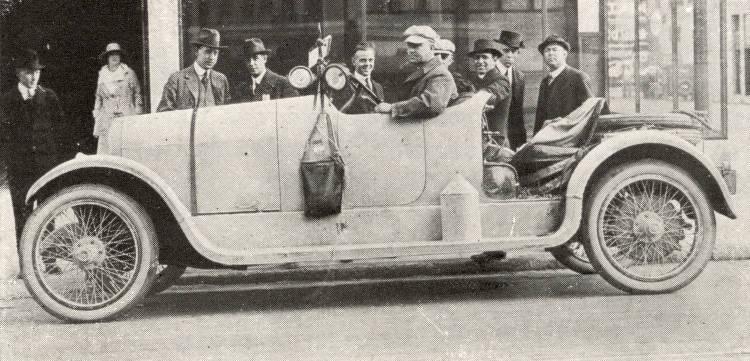A model of automobile produced in Indianapolis, often called “the nearest American approximation to the Rolls-Royce,” the Marmon was produced by Marmon Motor Car Company, a division of on West Morris Street. It was part of an elite group of cars that did not start from a horse-drawn carriage plant but rather from established machinery builders.

Marmon engineers pioneered modern pressure lubrication, designed air-cooled V-4 engines, and built “systems engineered” cars that incorporated driver, car, road, and tire interface in the design. Other firsts for the company were side entrances, all-aluminum cars, and factory-installed radios.
Marmon gained national prominence when its entry became the first winner of the in 1911. By scoring highly or winning various other early road races, the Marmon earned a reputation for reliability and comfort. The company competed in the automobile market with Packard, Cadillac, Pierce-Arrow, and Lincoln. Silent-film movie star Francis X. Bushman reportedly spent $20,000 (around $500,000 in 2021) in 1915 for a custom, amethyst-colored Marmon Model 48. In 1916, the French government purchased a fleet of Marmons for its political and army officials, the French automobile industry having been disrupted by World War I.

Marmon, which as early as 1920 employed 5,000 people, produced innovative and stylish autos throughout the 1920s. In the late 1920s, Marmon introduced two unique autos, the Little Marmon (1927), a compact; and the Roosevelt (1929), the first eight-cylinder car in the world to sell for under $1,000. The company also continued to produce high-end luxury vehicles. In the early 1930s, the Marmon V-16 won a long list of awards for design and engineering, but, with a price tag of $5,000, less than 400 were produced.
Despite its reputation and the introduction of more reasonably priced cars, Marmon was unable to weather the stock market failure of 1929 and the ensuing economic depression. Decreased sales forced the company to close its automotive activities. Throughout its history, the company manufactured only 110,000 automobiles. Those that have survived are highly collectible.

The Marmon name lives on through the distinctive and well-engineered line of Marmon-Herrington trucks produced initially in Indianapolis.

Help improve this entry
Contribute information, offer corrections, suggest images.
You can also recommend new entries related to this topic.

